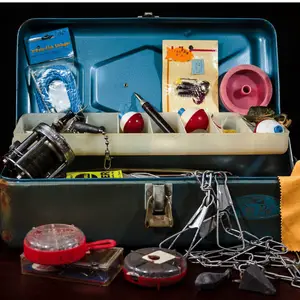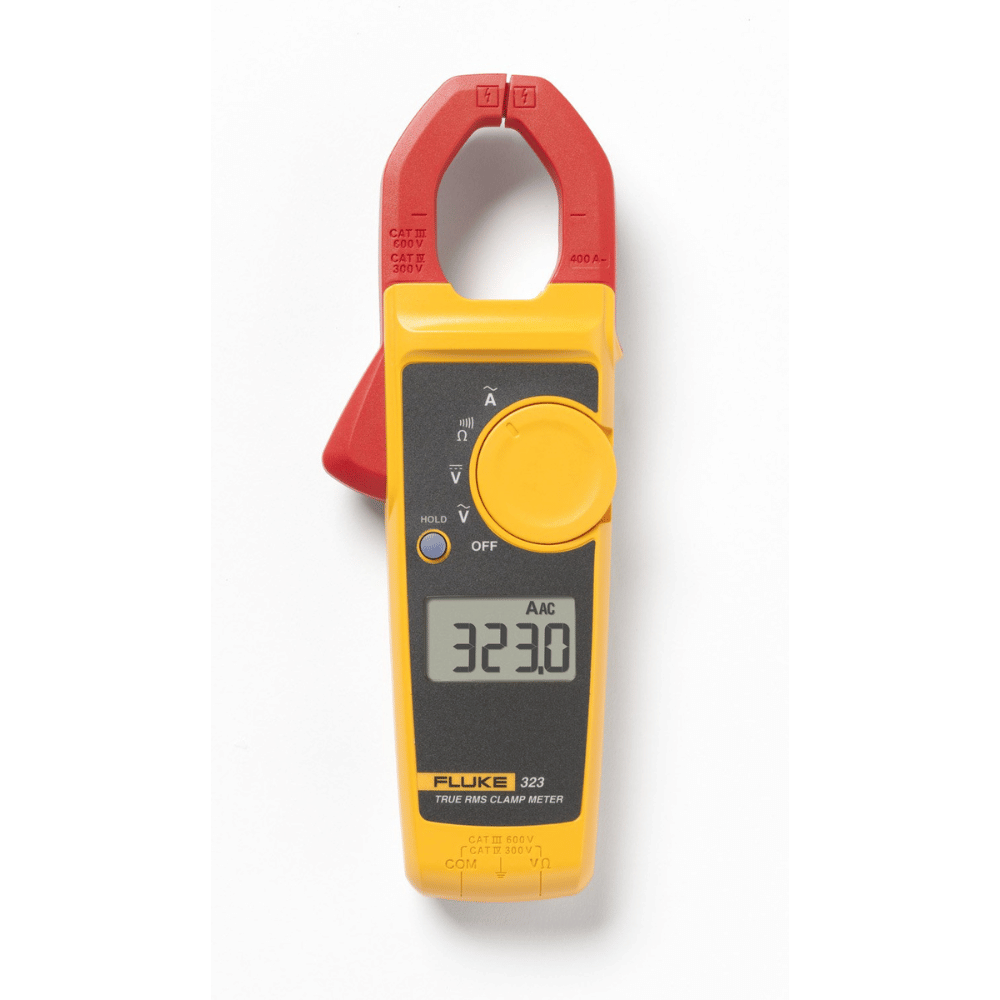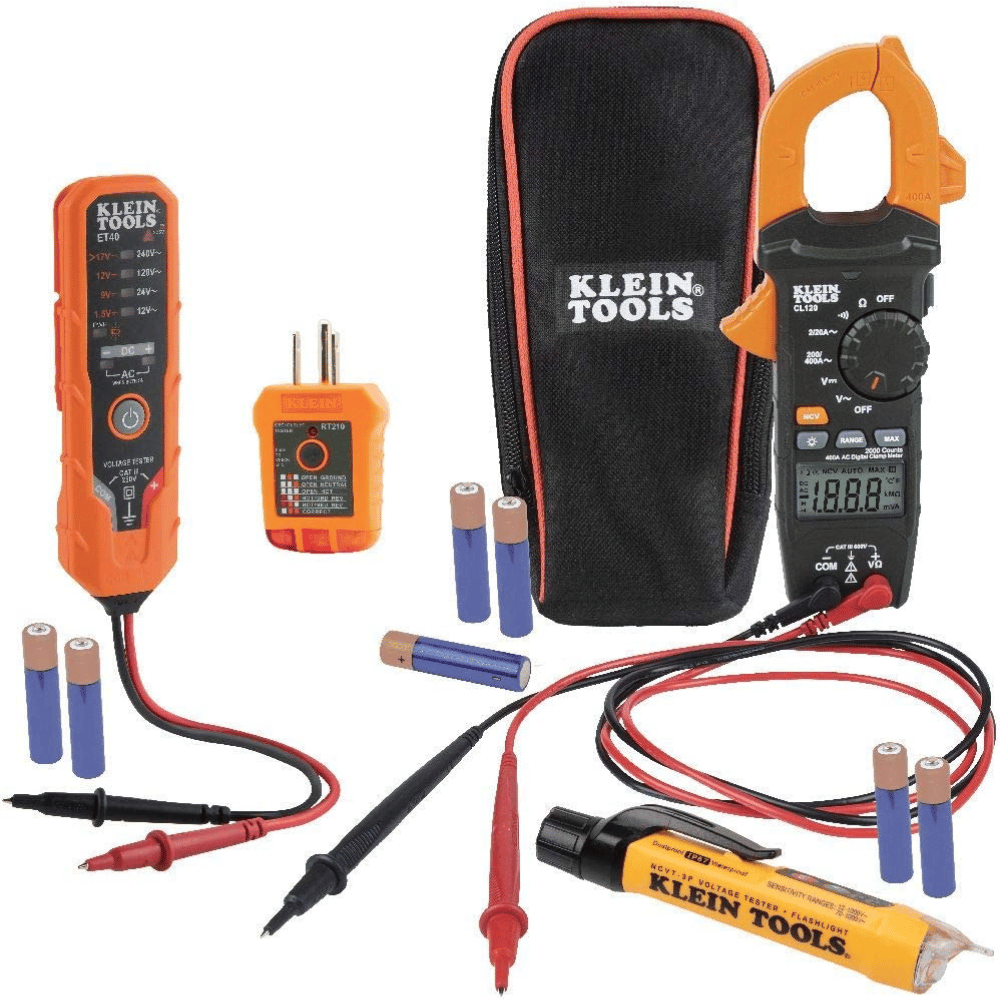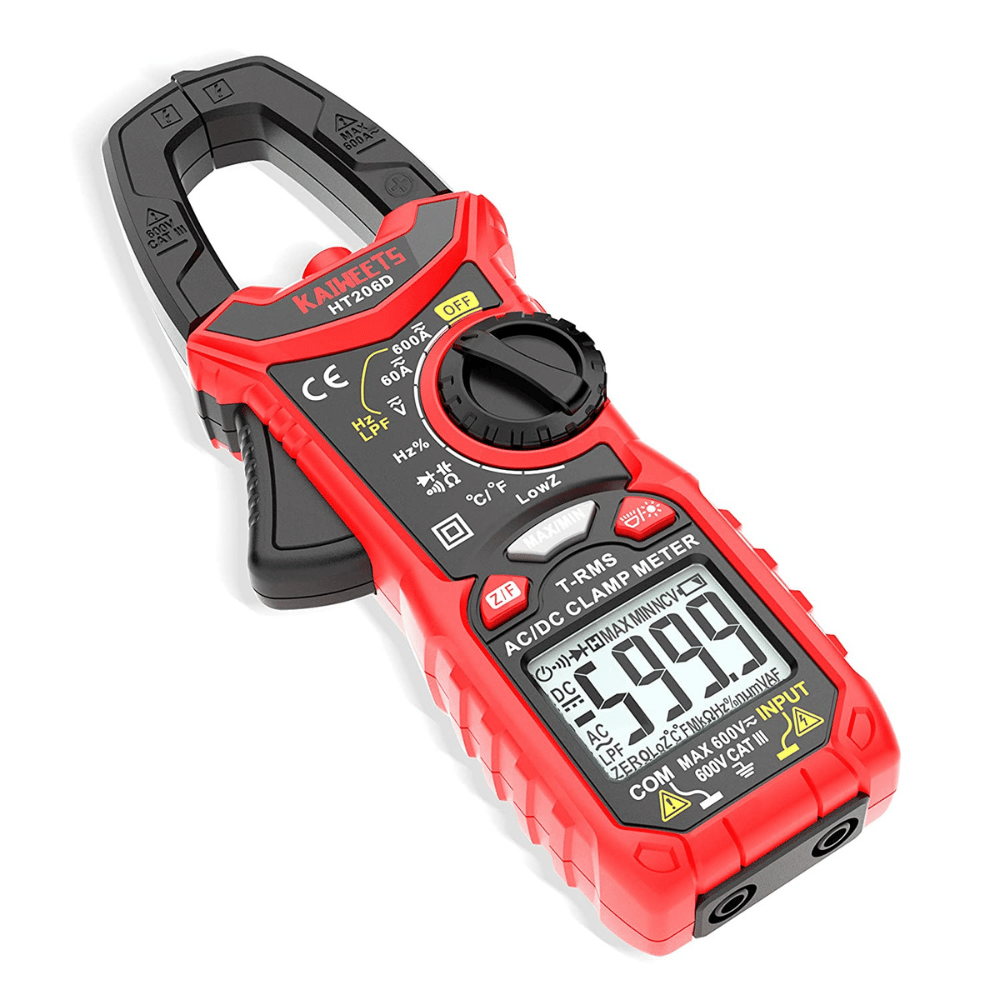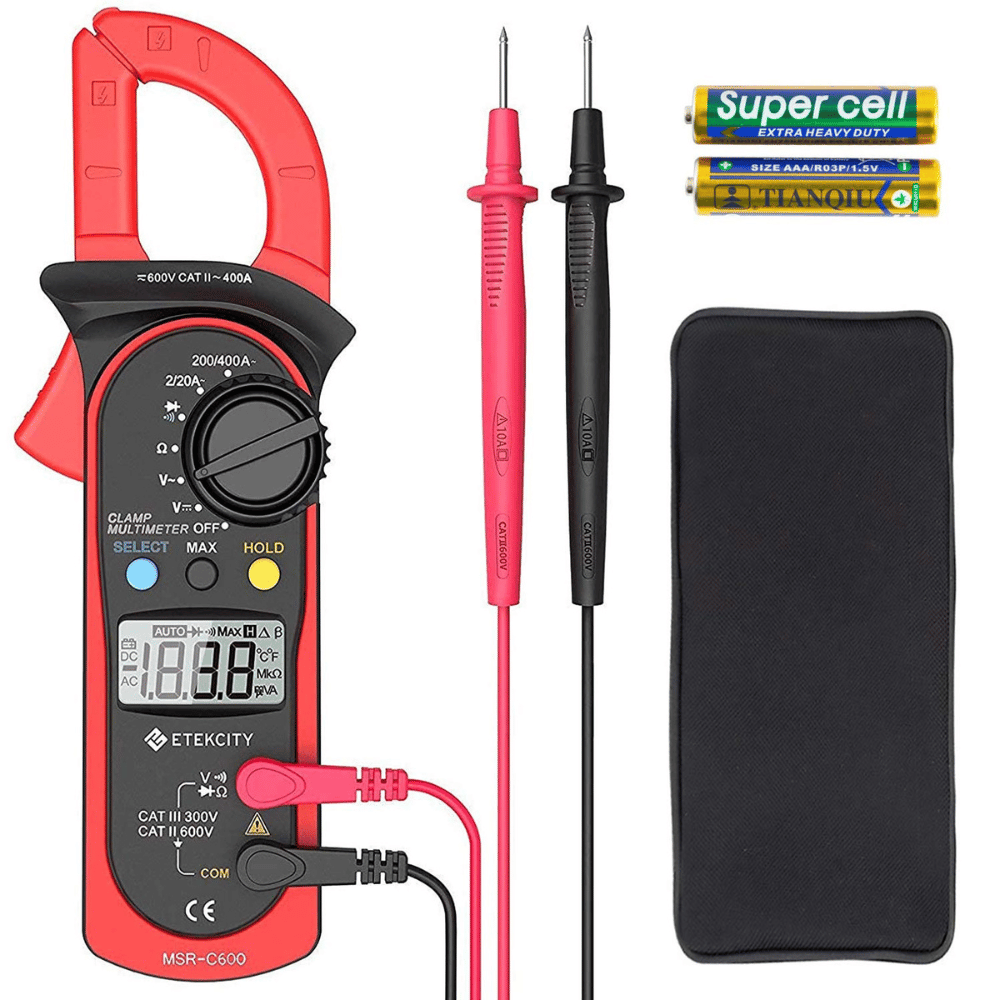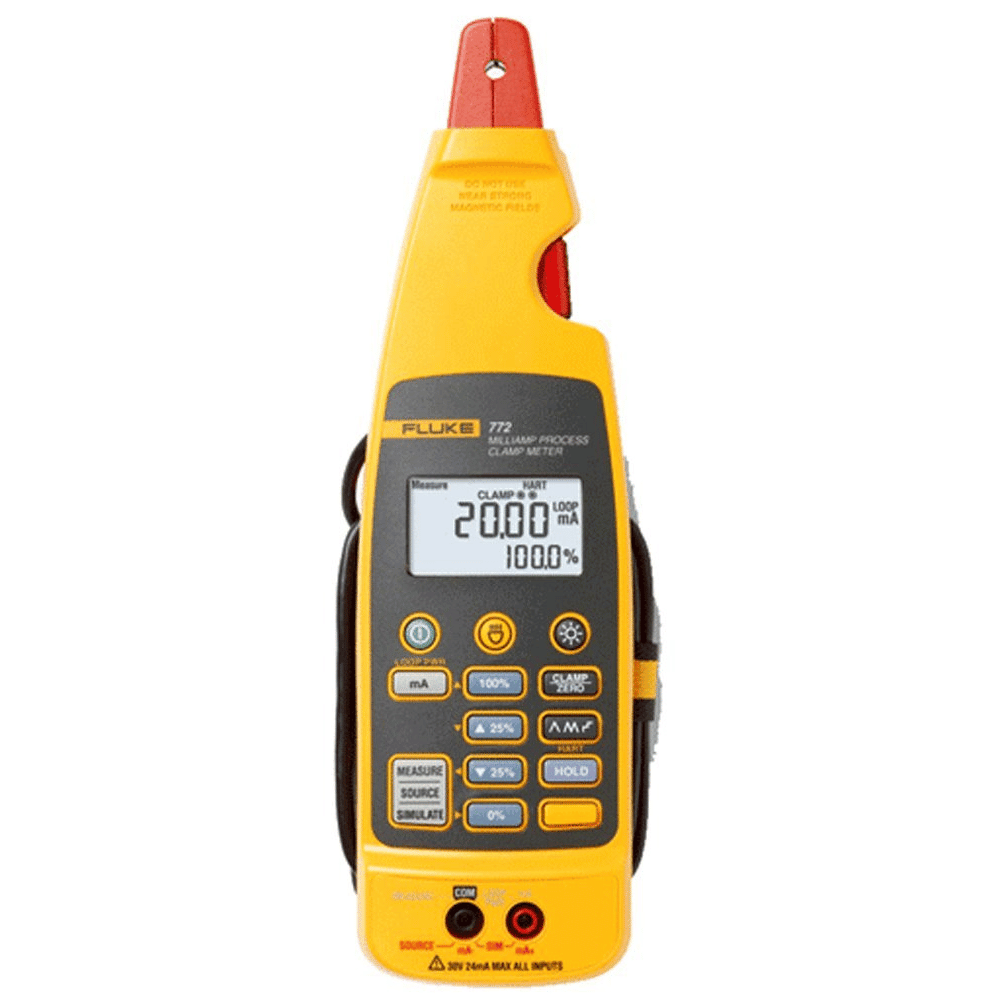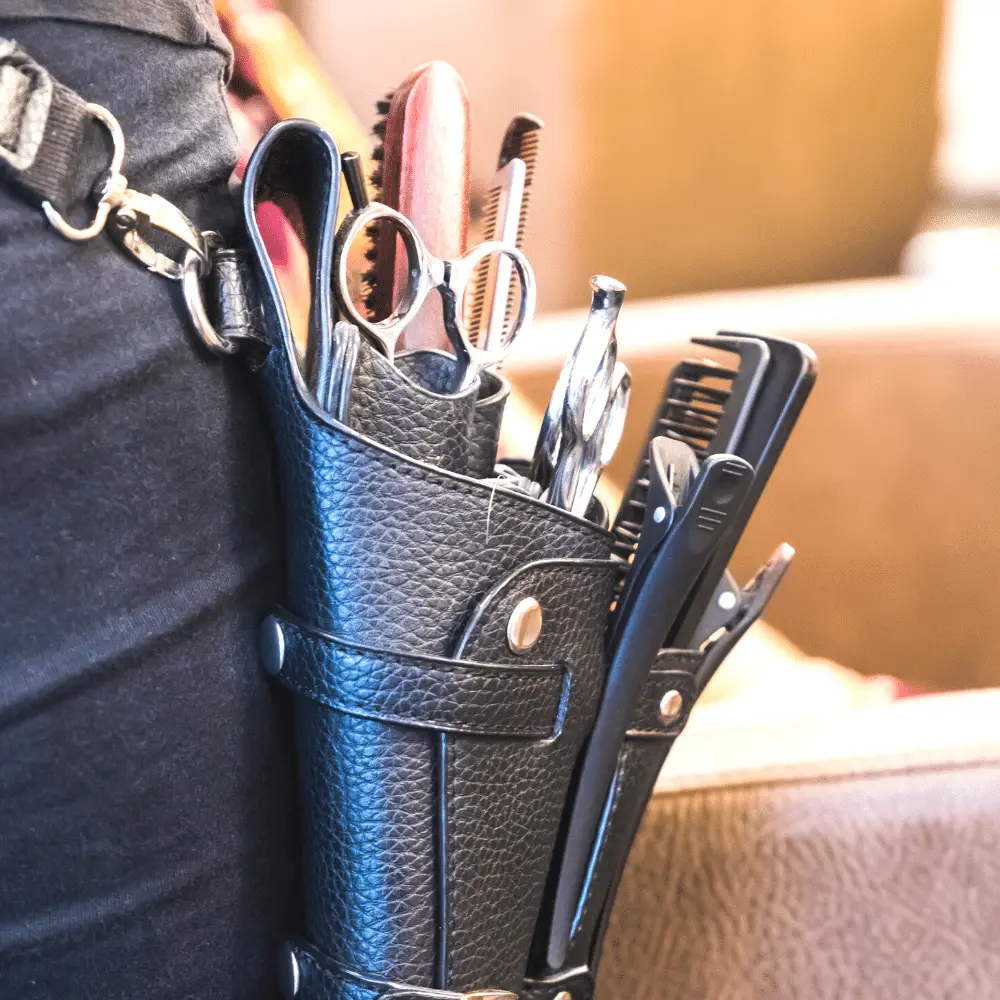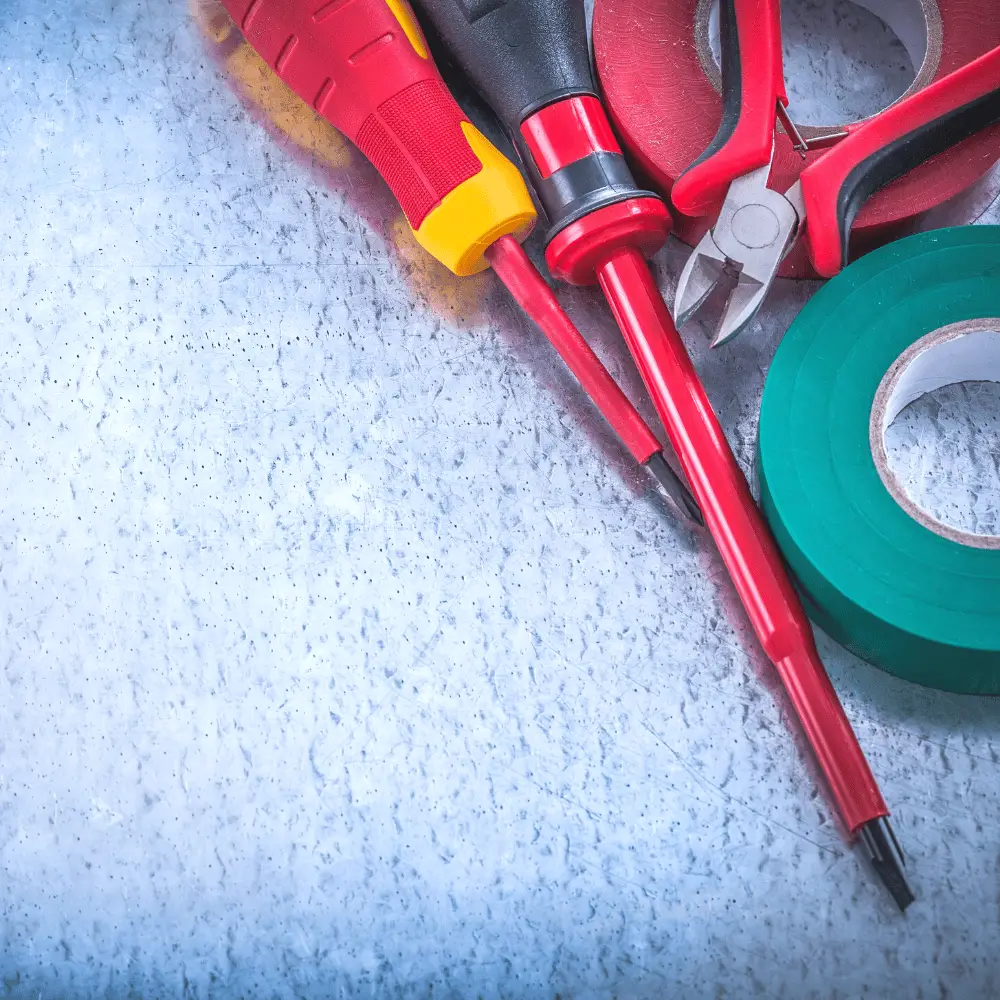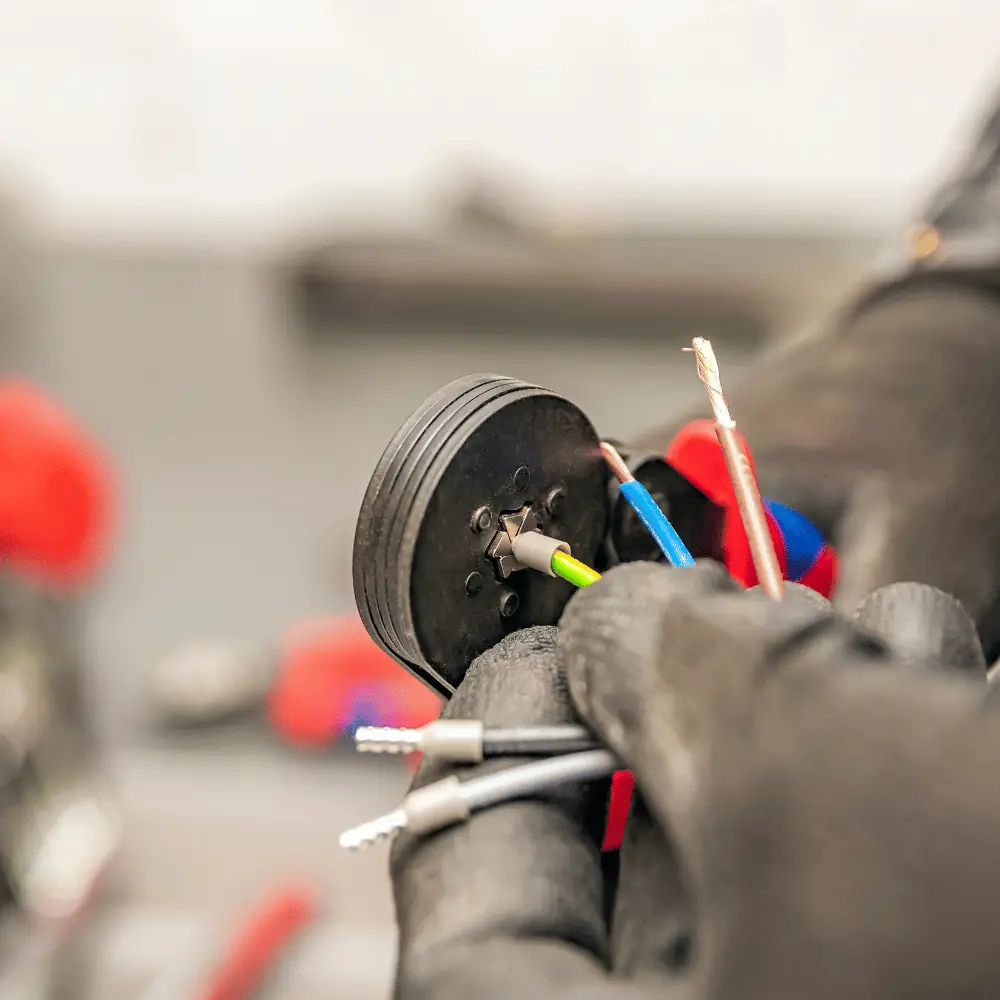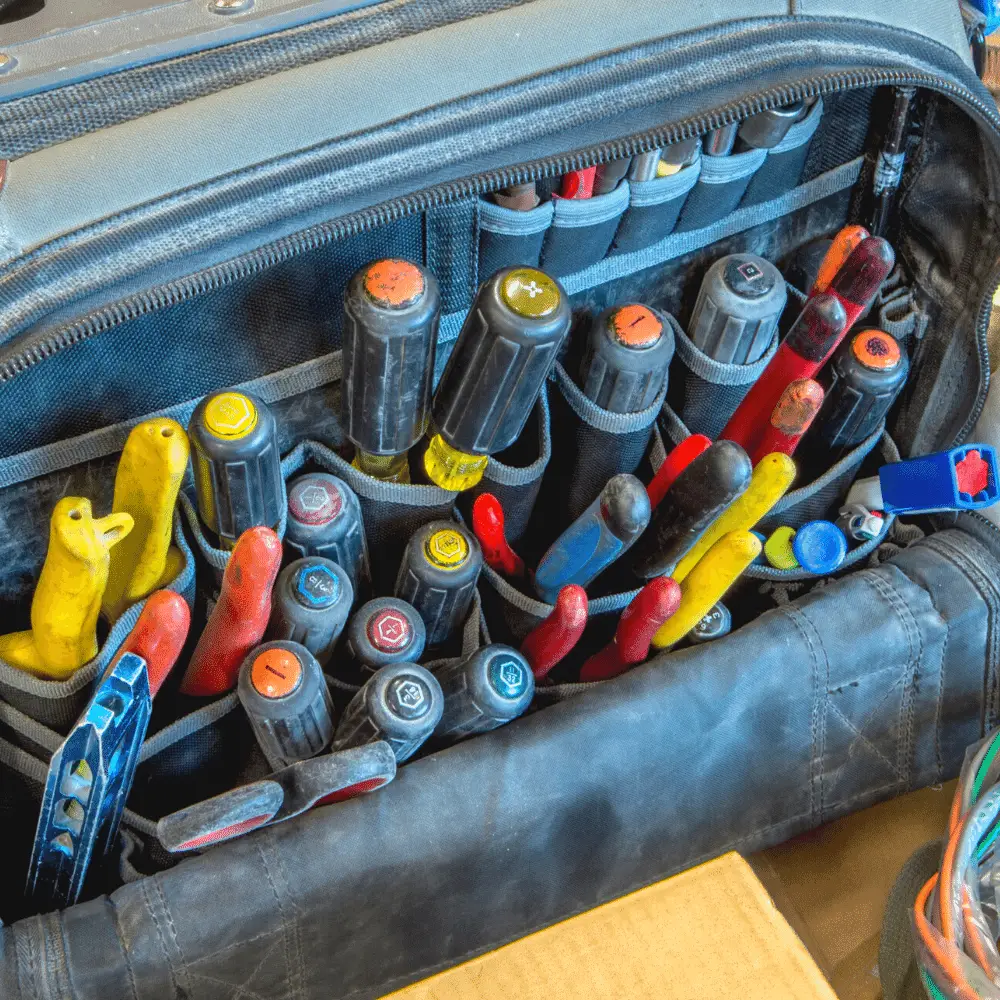Table of Contents
- What is a Clamp Meter and Why Do You Need One?
- Understanding the Key Features and Specifications of a Clamp Meter
- The Different Types of Clamp Meters and Which One is Right for You
- (Our Recommendations) Top 5 Best Clamp Meters on the Market
- Tips for Proper Usage and Maintenance of Your Clamp Meter
- Frequently Asked Questions about Clamp Meters Answered by Experts
What is a Clamp Meter and Why Do You Need One?
A clamp meter is an essential electrical testing tool used by electricians and professionals in the field of electrical work. It is a versatile device that combines the functions of a digital multimeter with the ability to measure current without breaking the circuit.
The primary purpose of a clamp meter is to measure AC or DC current flowing through a conductor. Unlike traditional multimeters, which require the circuit to be broken and wires to be disconnected for current measurement, a clamp meter can simply be clamped around the wire to obtain accurate readings.
This makes it an indispensable tool for electricians as it allows them to quickly and safely measure current in various applications such as residential wiring, industrial maintenance, HVAC systems, and troubleshooting electrical faults.
In addition to measuring current, clamp meters also offer other features like voltage measurement, resistance measurement, continuity testing, and even temperature measurement in some advanced models. This versatility makes them an all-in-one solution for electrical measurements.
Whether you are a professional electrician or someone who occasionally works with electrical systems, having a clamp meter in your toolkit is crucial for accurate and efficient measurements. It not only saves time but also ensures safety by eliminating the need to disrupt circuits during testing.
Understanding the Key Features and Specifications of a Clamp Meter
When it comes to electrical measurements, a clamp meter is an essential tool for professionals in the field. It offers a range of features and specifications that make it versatile and reliable for various applications.
One of the key features of a clamp meter is its ability to measure current. It utilizes a clamp mechanism that allows it to measure AC or DC current without the need to disconnect wires. The current measurement range is an important specification to consider, as it determines the maximum current that the meter can accurately measure.
In addition to current measurement, clamp meters also have voltage measurement capabilities. They can measure both AC and DC voltage, providing valuable information about electrical circuits. The voltage range is another specification to take into account, as it determines the maximum voltage that the meter can safely handle.
Another feature of clamp meters is their ability to perform resistance and continuity testing. This allows professionals to check for faulty connections or components in electrical circuits. The resistance range specifies how accurately the meter can measure resistance values, while continuity testing helps identify whether a circuit is open or closed.
Overall, understanding the key features and specifications of a clamp meter is crucial for selecting the right tool for your specific needs. By considering factors such as current measurement range, voltage capabilities, and resistance testing abilities, professionals can ensure accurate and efficient electrical measurements in their work.
The Different Types of Clamp Meters and Which One is Right for You
When it comes to measuring electrical currents, clamp meters are an essential tool for professionals in the field. They allow for safe and accurate measurements without the need to disconnect wires. However, with the wide range of options available, it's important to understand the different types of clamp meters and determine which one is right for your specific needs.
- Digital Clamp Meter: This type of clamp meter provides precise digital readings on an LCD screen. It offers a wide range of features such as resistance measurement, continuity testing, and voltage measurement. Digital clamp meters are user-friendly and offer high accuracy in their measurements.
- Analog Clamp Meter: Analog clamp meters use a needle or pointer to display measurements on a dial or scale. While they may not provide as precise readings as digital models, they are still reliable and can be easier to interpret for some users who prefer analog displays.
- True RMS Clamp Meter: True RMS (Root Mean Square) clamp meters are designed to accurately measure both sinusoidal and non-sinusoidal waveforms. This makes them suitable for measuring distorted or irregular electrical signals commonly found in modern electronics.
- Wireless Clamp Meter: As technology advances, wireless clamp meters have become more popular due to their convenience and flexibility. These meters can connect wirelessly to a smartphone or other devices via Bluetooth or Wi-Fi, allowing users to remotely monitor and analyze data without being physically present at the meter itself.
When choosing a clamp meter, consider your specific requirements such as the type of electrical systems you work with, the level of accuracy needed in your measurements, and any additional features that may be beneficial for your work environment.
Ultimately, selecting the right type of clamp meter will ensure that you have a reliable tool that meets your needs while providing accurate measurements in a safe manner.
Top 5 Best Clamp Meters on the Market
When it comes to electrical measurements, clamp meters are essential tools for professionals in various industries. Whether you're an electrician, HVAC technician, or DIY enthusiast, having a reliable clamp meter can greatly simplify your work and ensure accurate readings. In this section, we will discuss the top 5 best clamp meters currently available on the market.
- Top Shelf - Fluke 323 Clamp Meter (overview)
- Next Best - Klein Tools CL120VP Electrical Voltage Test Kit with Clamp Meter (overview)
- Editor's Choice - KAIWEETS HT206D Digital Clamp Meter (overview)
- Best Bang For Your Buck - Etekcity Digital Clamp Meter Multimeter (overview)
- Splurge Worthy - Fluke 772 11-Inch Milliamp Process Clamp Meter (overview)
TOP SHELF
Top Shelf Features
The Fluke 323 clamp meter is a reliable and convenient tool for commercial and residential electricians. It features a true RMS sensing meter that provides accurate readings when measuring linear or non-linear loads, regardless of waveform. The clamp meter's jaw opening allows it to measure current in a conductor up to 30 millimeters without touching or interrupting the circuit.
It also has a resistance accuracy of 1.0% ± 5 digits and an audible continuity sensor that confirms whether a circuit conducts electricity. In terms of safety, the Fluke 323 meets the IEC safety standard 61010 1 and is rated for CAT IV installations to 300V and CAT III installations to 600V.
This clamp meter is also ergonomic, rugged, and reliable, making it a great choice for general, grab and go troubleshooting needs. It is especially well-suited for current measurements up to 400 amps in tight cable compartments.
Top Shelf Details
The Fluke 323 clamp meter is a versatile and reliable tool designed for use by commercial and residential electricians. It offers a range of measurement capabilities, including 400 A AC current measurement, 600 V AC and DC voltage measurement, and resistance measurement up to 4 kΩ with continuity detection.
The clamp meter also features true RMS AC voltage and current measurement for accurate readings on non-linear signals. Its slim, ergonomic design makes it easy to handle and use, and it has a CAT IV 300V/CAT III 600 V safety rating for added protection.
The Fluke 323 runs on 2 AAA batteries (included) and has a product dimension of 1.34 x 2.95 x 8.15 inches and a weight of 7.05 ounces. It is important to note that this clamp meter does not measure DC current.
Next Best
Top Shelf Features
The Klein Tools CL120 Digital Clamp Meter is a versatile and convenient tool for electrical testing and maintenance. It features measuring ac current and non-contact voltage (NCVT) via the clamp, as well as AC/DC voltage, resistance, and continuity via test leads. The clamp meter also has a non-contact voltage tester integrated into the clamp jaw, allowing for quick and easy voltage detection.
The CL120 has a backlit LCD for ease of viewing in low light conditions, and it offers auto ranging measurements for added convenience. Additionally, the clamp meter has a test lead holder on the side of the clamp and an optional magnetic hanger for hands-free operation.
Top Shelf Details
The Klein Tools CL120 Digital Clamp Meter is a portable and easy-to-use tool for electrical testing and maintenance. It is powered by a battery and has a compact size of 1 x 1 x 1 inches, making it easy to carry and store. The clamp meter has a weight of 1 pound and includes a Digi Clamp Meter AC Auto-Ranging 400 Amp as part of the package. It is designed to measure AC current and non-contact voltage (NCVT) via the clamp, as well as AC/DC voltage, resistance, and continuity via test leads.
The Klein Tools CL120 Digital Clamp Meter is a handy tool for electrical testing and maintenance, featuring a non-contact voltage tester integrated into the clamp jaw, a backlit LCD for low light visibility, and auto ranging measurements for convenience.
It also has a test lead holder on the side of the clamp and an optional magnetic hanger for hands-free usage. It is able to measure AC current and non-contact voltage via the clamp, as well as AC/DC voltage, resistance, and continuity via test leads.
Editor's Choice
Top Shelf Features
The KAIWEETS HT206D Digital Clamp Meter is a versatile clamp meter and accurate tool for electrical testing and maintenance. It features a true rms clamp meter, allowing it to accurately measure AC/DC current, AC/DC voltage, frequency or duty cycle, resistance, capacitance, and more.
It also has a non-contact voltage detection (NCV) function that allows you to effectively check the electrical status of a circuit by measuring the EM field intensity without touching any wires. The NCV button is conveniently located on the right side of the clamp meter, making it easy to use.
This accurate clamp meter function that helps prevent false readings due to ghost voltage, as well as a Low Pass Filter (LPF) function that allows for accurate measurement of variable frequency drive signals when measuring motors and transformers. It is easy to use and suitable for a variety of settings, including labs, factories, and households.
Top Shelf Details
The KAIWEETS HT206D Digital Clamp Meter is a multi-function tool that offers a range of features for electrical testing and maintenance. It has a two-color backlit LCD display that turns red when the voltage is above 80V or the current is above 3A, warning you of high voltage.
The clamp meter also has a built-in LED flashlight and a temperature measurement function, using a K-Type thermocouple to measure the temperature of liquids and air conditioning ports. The HT206D has a low battery indicator and will automatically power off after 15 minutes of inactivity to conserve battery life. In terms of safety, the clamp meter meets the IEC 61010-1 standard and has a CAT III 600V safety rating. It also has double insulation for added protection.
The HT206D has a product dimension of 7.5 x 2.8 x 1.3 inches and a weight of 15.17 ounces. It requires 2 AAA batteries (not included) to operate. The manufacturer provides a 36-month product service and 7/24 customer service for this clamp meter.
Best Bang For Your Buck
Top Shelf Features
The Etekcity Multimeter is a user-friendly and innovative tool for electrical testing and maintenance. This affordable clamp meter is capable of accurately measuring AC/dc voltages, AC current (not DC current), resistance, and also provides diode and continuity tests unlike other cheap clamp meters.
The clamp meter has a jaw opening that allows it to measure the AC current in a conductor up to 26mm without interrupting the circuit, providing a safe and non-invasive way to measure current.
The multimeter also has additional features such as a data hold function, a max reading function, and an easy-to-read large LCD display, making it quicker and easier to use. The auto ranging function ensures that you get precise temperature measurements every time. The Etekcity Multimeter is compact and portable, coming with a handy carrying pouch that makes it perfect for use while you're on the go.
Top Shelf Details
The Etekcity Digital Multimeter is a compact and portable tool for electrical testing and maintenance. It has dimensions of 8.19 x 2.99 x 1.18 inches, making it easy to carry and store. The multimeter has a weight of 13.44 ounces and requires 2 AAA batteries (included) to operate.
It offers a range of features that make it a useful tool for electrical projects, including a safe and simple test voltage, multifunctional auto ranging assistance, diode and continuity testing, and an LCD display. These digital clamp meters also have auto off functionality to conserve the life of the battery. It is easy to use and comes with an unpacking guide to help you get started.
Splurge-Worthy
Top Shelf Features
The Fluke 772 11-Inch Milliamp Process Clamp Meter is a advanced tool for electrical testing and maintenance. It has a number of useful features that make it ideal for testing and measuring 4 to 20 mA signals. The clamp meter has an automatic power off function to conserve battery life, as well as a loop power supply that allows you to measure 4 to 20 mA signals without "breaking the loop."
It also has a dual backlit display that shows both the mA measurement and the percent of 4 to 20 mA span, as well as a measurement spotlight for added convenience. In addition to these features, the Fluke 772 can source 4 to 20 mA signals for testing control, simulate 4 to 20 mA signals for testing control, measure 4 to 20 mA signals with in-circuit, and simultaneously measure mA in-circuit with 24 V loop power for powering and testing transmitters.
It can also output mA signals in a linear ramp or 25% step output, and automatically change the 4 to 20 mA output for remote testing. The clamp meter has power saving features such as an auto-off function and a backlight timeout to extend battery life.
Top Shelf Details
The clamp meter has a measurement range of up to 99.9 mA and can measure non-contact, making it a versatile and reliable tool for a variety of applications. In terms of size and weight, the Fluke 772 has dimensions of 5 x 11.63 x 2.88 inches and a weight of 14.46 ounces. It requires 1 A battery (included) to operate.
The package includes the Fluke meter, four AA alkaline batteries (installed), a soft carrying case, TL75 test leads, an AC 72 detachable clip, TL 940 mini hook test leads, an instruction sheet, and a hanging tool with a hook and loop strap.
Tips for Proper Usage and Maintenance of Your Clamp Meter
Using a clamp meter safely and maintaining it properly are essential for accurate measurements and prolonging the lifespan of your device. Here are some tips to ensure the proper usage and maintenance of your clamp meter:
- Read the manual: Familiarize yourself with the manufacturer's instructions and guidelines provided in the user manual. This will help you understand the features, functions, and safety precautions specific to your clamp meter model.
- Safety first: Before using a clamp meter, ensure that it is in good working condition, free from any visible damage or defects. Inspect the leads and probes for any signs of wear or fraying. Always wear appropriate personal protective equipment (PPE), such as insulated gloves, when working with electrical circuits.
- Select the right range: When measuring current with a clamp meter, select an appropriate range that can handle the expected current value without overloading the device. This will prevent inaccurate readings and potential damage to your meter.
- Proper positioning: Place the jaws of your clamp meter around only one conductor at a time to obtain accurate current measurements. Ensure that there is no other nearby conductor or magnetic field interfering with your measurement.
- Calibration: Regular calibration is crucial to maintain accuracy in measurement readings over time. Follow the manufacturer's recommendations for calibration intervals and procedures or consult a professional calibration service provider.
- Cleaning and storage: Keep your clamp meter clean by wiping it down after each use with a soft cloth or brush to remove any dirt or debris that may affect its performance. Store it in a dry, cool place away from direct sunlight or extreme temperatures.
- Avoid excessive force: Handle your clamp meter with care, avoiding unnecessary force or dropping it as this can cause internal damage that may affect its accuracy.
By following these tips for safe usage and proper maintenance of your clamp meter, you can ensure reliable measurements while prolonging its lifespan for years to come.
TOP SHELF RECAP
- Top Shelf - Fluke 323 Clamp Meter
- Next Best - Klein Tools CL120VP Electrical Voltage Test Kit with Clamp Meter
- Editor’s Choice - KAIWEETS HT206D Digital Clamp Meter
- Best Bang For Your Buck - Etekcity Digital Clamp Meter Multimeter
- Splurge Worthy - Fluke 772 11-Inch Milliamp Process Clamp Meter
FAQs about Clamp Meters Answered by Experts
Here are the most frequently asked questions about the best clamp meters:
What is a clamp meter used for?
A clamp meter is a versatile and essential tool for professionals working in electrical engineering, construction, and maintenance. It allows you to measure the current of a circuit without the need to break or disconnect any wires. This feature makes it convenient for determining fault locations and diagnosing issues with appliances, wiring systems, switches, and other electronic equipment.
Clamp meters are capable of measuring AC (Alternating Currents) as they utilize an electromagnetic field to detect electric fields. These tools offer a wide range of features, including current measurement (amperage), capacitance readings (in farads), resistance measurements (ohms), temperature readings, frequency measurements, continuity testing, and more, depending on the model.
When using a clamp meter, it is important to take proper safety precautions. This includes wearing protective clothing or goggles and ensuring that the power is turned off before conducting any tests with the device. It is also crucial to know how to properly use your specific instrument. Different models may have different features, so it is wise to double-check the manual before use if you have any uncertainties.
Are clamp meters any good?
Clamp meters are incredibly versatile tools that can make a significant difference in the toolbox of any electrical professional. They are specifically designed to measure current without the need to cut into a circuit or disrupt the flow of electricity. This unique feature makes them ideal for diagnosing problems and assessing performance without compromising safety.
These non-intrusive probes come in analog and digital varieties. Analog units are commonly used for measuring AC current up to around 500 amps, utilizing either jaw-type or split-core designs. For higher readings, digital clamp meters are recommended. They can measure both AC and DC current up to 10, 000 Amps, which is often found in three-phase installations. Other features found in modern digital clamp meters include True RMS sensing technology, which ensures accuracy when dealing with non-linear loads such as electronics power supplies. Additionally, these meters offer frequency measurements and resistance capabilities, allowing you to accomplish multiple tasks simultaneously.
Clamp meters have significantly evolved over the years and are now considered one of the most valuable tools for electricians. If your work involves precise measurements of voltage drops and amperage readings across different circuit types, I highly recommend using a clamp meter.
Can I measure DC current with a clamp meter?
Yes, you can measure DC current with a clamp meter! Clamp meters are versatile test instruments that allow you to measure both AC and DC currents without the need to interrupt the circuit. A clamp meter is equipped with a pair of jaws that can be opened wide enough to encircle or "clamp" around the current-carrying wire or cable. It utilizes electromagnetic induction technology to accurately measure the magnitude and direction (polarity) of the AC/DC current present.
By utilizing their ability to take precise measurements through insulation, clamp meters offer an efficient method for measuring current in-circuit or on equipment without the need to physically disconnect any connections. This feature helps save time, effort, and money during maintenance tasks.
If you decide to use a clamp meter for measuring DC current levels instead of your trusty multimeter, it is important to consider certain specifications when making your purchase such as the followings:
- Check if it has an accurate AC/DC frequency response. This will indicate how well the meter can accurately reproduce various frequencies.
- To ensure accuracy, it is ideal for your chosen model to provide error readings within the range of 0. 5% to 1%.
- Consider the resolution of the device. Higher resolution typically means higher accuracy, so it is recommended to get a device with at least a 5-digit display resolution.
- Before settling on a unit, consider the range of levels it supports. Lower ranges offer less precision, so it's important to choose one that covers enough range to meet your specific application needs.
Ultimately, ensure that whatever device you choose meets all relevant safety standards to guarantee optimal performance while protecting yourself and those working around the equipment from potential electric shock hazards.
Can I use a clamp meter as a multimeter?
Yes, it is possible to use a clamp meter as a multimeter. Clamp meters are capable of measuring current by placing an electrical clip around one of the cables carrying electricity, and in some cases, they can also measure voltage. One advantage of using a clamp meter is that it eliminates the need to cut or disconnect any wires when measuring current, thereby saving time and effort.
Multimeters are versatile instruments used for testing various components like capacitors, resistors, and transistors. To measure current, a multimeter utilizes two probes or "leads" that are attached across the object being tested. On the other hand, a clamp meter has a single special probe attached, known as the electrical clip. While both devices are capable of measuring voltage and current, they possess different qualities depending on the type of measurement being taken.
Most clamp meters come equipped with several other features, making them ideal for a variety of tasks such as:
- Data logging function often used in industrial applications. It has the ability to store data readings over time e.g., recording power output from solar panels.
- Temperature measurement via contact sensors or infrared
- Frequency measurements – these types of measurements assist in diagnosing motors & generators etc.
- AC/DC volts selection switch allows you to quickly switch between AC/DC voltages
- Duty cycle display – this feature helps detect faulty wiring caused by short-circuiting or miswiring in residential homes and offices.
- Capacitance & resistance capabilities - helpful when dealing with circuit boards & electronics diagnosis tests etc.
- Overload protection rating above 600 VAC- detects transformers overloading issues etc.
Yes, you can indeed use a clamp meter as a multimeter! The readings you can obtain from your device will depend on your specific requirements. If you need more than just basic current measurements, investing in a high-quality clamp meter with advanced features would certainly be beneficial.
Can a clamp meter measure wattage?
Yes, a clamp meter can measure wattage. To specifically measure wattage, you will need a clamp meter with true-power calculation capabilities. These types of devices enable accurate readings of active power usage over time, allowing you to assess wattage values accurately at any given moment or averaged over periods of time.
Using true power measurements helps determine the total energy used by electrical appliances such as air conditioning units, refrigerators, computers, or any other device powered by electricity. Relying solely on voltage and current measurements would only provide instantaneous readings, without providing information on the cumulative power consumption since the device was first connected or switched on.
In short, yes! A clamp meter can certainly measure wattage when set up with the appropriate functions enabled. This is made possible through its various features, such as true-power calculation capabilities and direct access readouts in kilowatts (kW) instead of just displaying raw utility delivery rates in volts and amperes.




